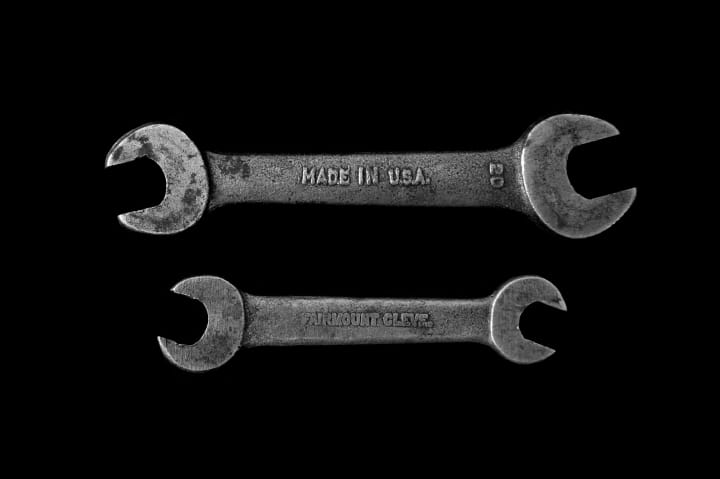How to Change Your Oil
If you want to learn how to change your oil, just follow these simple steps.

Keeping track of your oil is one of the simplest, yet most important aspects of car maintenance. The quality of your oil affects everything else about how the engine runs, so you can't slack on replacing it when it needs to be replaced. Paying attention to your oil levels is one of the easiest ways to make your car last longer.
While getting your engine oil replaced is a common procedure for mechanics, you can save money by changing your oil yourself. It's actually easier than it sounds, and can be done quickly. All you have to do is figure out how much and what kind of oil you need, pick up a couple other pieces of equipment, and dedicate an hour of your time. It doesn't get much simpler than that. Once you've studied how to purchase the best motor oil for your car, all that's left to do is to actually figure out how to change your oil!
Set up your workstation.

Photo by Fancycrave on Unsplash
The key to changing your oil quickly, easily, and with no added fuss is to take care of all your preparations beforehand. First and foremost, you'll want to scout out a location to take care of business. If you have a garage or a flat driveway, that's an obvious ideal location. If you don't have access to a garage, you'll have to find an area where the ground is flat and as level as possible. You'll also want to make sure you have enough space to comfortably work in.
When you change your motor oil, you want it to be relatively warm, but not hot. If you have to be driving around before you have a chance to change your oil, you'll want to let the engine sit for at least a good half hour. Likewise, if your car as been sitting in a cool garage all day, you'll want to start the engine and let it run for ten minutes or so to warm up the oil a bit. Once you get that all sorted out, make sure your vehicle is in park with the parking brake on. If you need additional space to work under your vehicle, you should also jack it up on one side, but be sure to use caution and follow all safety procedures when doing this.
Tools and Equipment

Photo by Matt Artz on Unsplash
Learning how to change your oil is not as difficult as it may seem to inexperienced auto owners. While there are a few specialized pieces of equipment you must purchase, the cost in the long run will be far cheaper than the surcharges of paying a mechanic to change your oil twice a year.
One-time use equipment purchases include your new engine oil (however much you need), a new oil filter, and a container for your used oil. You should also make sure you have a dedicated oil funnel, but this can be reused. These can all be purchased at your local auto parts store. The salesmen will be able to help you figure out exactly what type of filter, etc. you need if you aren't sure.
There are a few other tools that you'll need. If you have a well-stocked toolbox, you should already have them on hand. If not, make sure you pick up a socket wrench (the appropriate size for your oil drain plug), a rubber mallet, some rubber gloves, and a bunch of rags. If you want to be safety conscious, some goggles or safety glasses wouldn't be a bad idea either.
Doing the Deed

Photo by Tim Mossholder on Unsplash
Once your vehicle is jacked up and you have all your equipment set out, it's time to actually tackle how to change your oil. First thing you'll want to do is remove the oil drain plug (you'll need your wrench and mallet for this) and make sure you have a container ready to catch the old motor oil. It'll take a few minutes for the oil to drain completely. Once that is finished, wipe everything down and replace the drain plug. Transfer the old oil to a sealable container (if you didn't catch it directly there to begin with) and set it aside. You'll want to find an oil recycling center near you to properly dispose of the oil. And now you're halfway done!
Changing the Filter

Photo by Fancycrave on Unsplash
Learning how to change your oil filter is just as important as knowing how to change your oil itself. First, you'll want to remove the old oil filter, making sure the rubber gasket comes out too. If you're worried about removing the filter, there are a variety of specialized oil filter wrenches you can purchase. Once you remove the oil filter, keep it in a safe location. By that I mean a location where it won't leak used motor oil everywhere, like a bucket or a plastic shopping bag. You can generally dispose of used filters at the same place you go to recycle your old oil.
Before you insert the new oil filter, coat it with a little bit of your new engine oil before screwing it into the vehicle. This will help the car adjust more quickly to the oil change and regain proper oil pressure. Tighten the filter by hand, and it's as simple as that!
Adding the New Oil

Photo by Tim Mossholder on Unsplash
The final step in changing your oil is simply to add the new oil. The exact amount of oil you need will vary depending on your vehicle, so consult your owner's manual. Remove the oil fill cap and slowly pour in the proper amount of oil, using a funnel if needed. This is also a good opportunity to learn how to clean your engine bay.
Once you've given your car the recommended dose of motor oil, replace the fill cap and start your vehicle. With your car running (just leave it in park), check around and under the vehicle for and signs of a leak or a drip. If you find anything, tighten the appropriate plugs.
If you've successfully changed your oil, the oil light on your car's dashboard should go out. Once that happens, turn off your vehicle and let the engine cool for several minutes before checking your dipstick to confirm you've added the proper amount of oil. If you need to add a little more oil, feel free to do so. Otherwise, and spare oil you have can be reserved for the next time you need an oil change. Then all that's left to do is to clean up your workspace, and your vehicle is good to go for another 3000–6000 miles.
Congratulations! You now know how to change your oil.
About the Creator
Joseph D. N. Kendrick
Writer of words. Haver of cats. joeykendrick.com






Comments
There are no comments for this story
Be the first to respond and start the conversation.